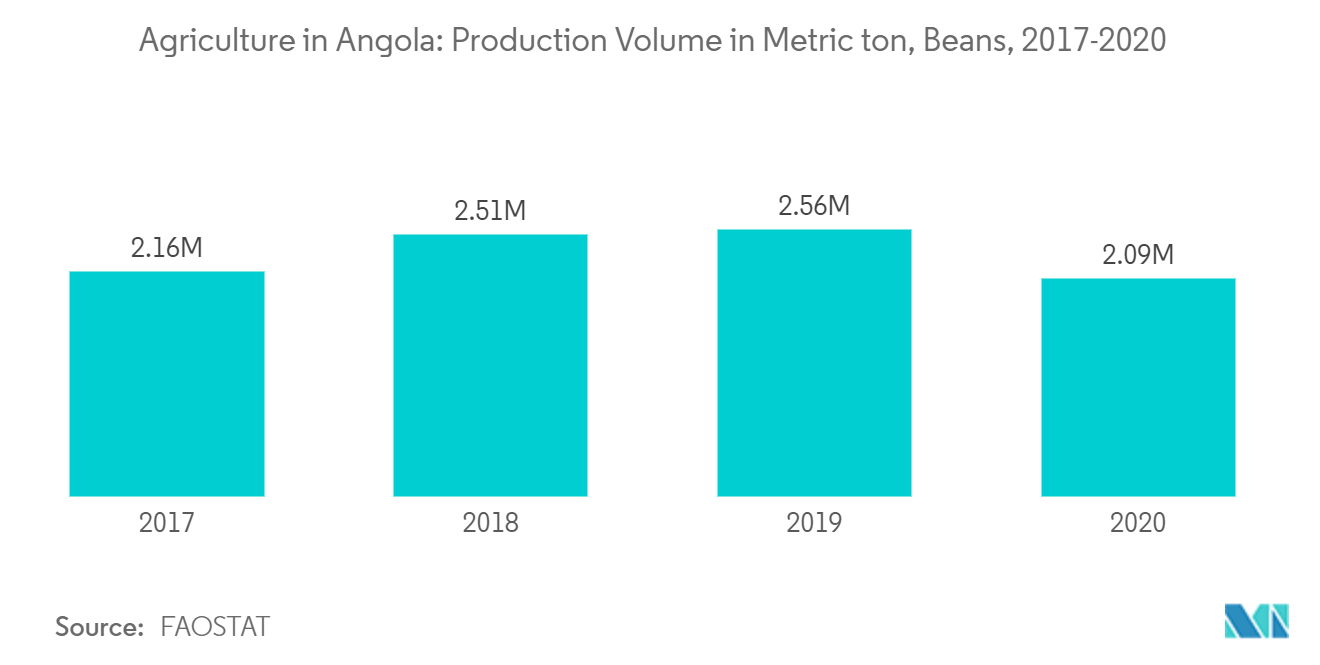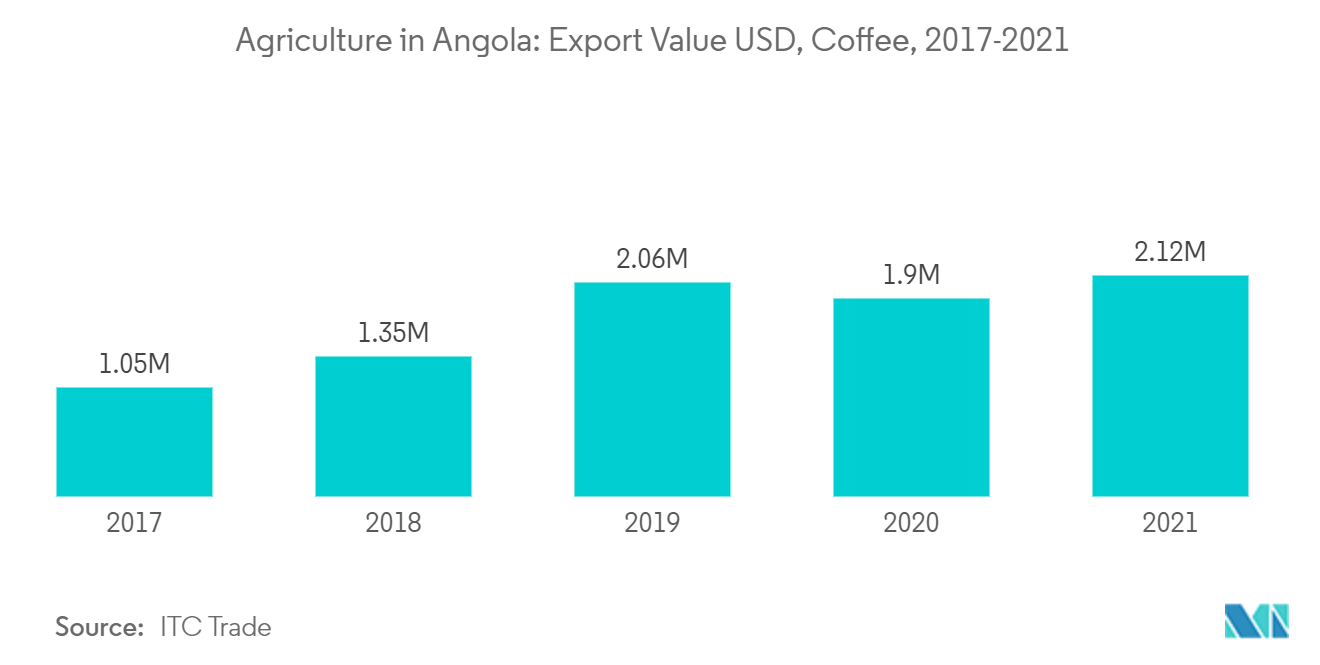Market Trends of Agriculture in Angola
This section covers the major market trends shaping the Angola Agriculture Market according to our research experts:
Favorable Government Policies Encouraging Agricultural Production
The conducive government policies are promoting agriculture in Angola. Agricultural development to diversify the economy and build domestic food production capacity is a featured element of the Angolan government's National Development Plan for 2018-2022, which will decrease the country's dependence on imported food. The Angolan government issued the Presidential Decree PAPE (Action Plan for Employability Promotion) to support this development.
Angola's agricultural support to producers is centered on maize and beans. The support is high for these commodities compared to other countries. Agriculture public support policies and programs contributed 45 percent of total gross revenues perceived by maize farmers. In comparison, beans received up to 28 percent in recent years. This has resulted in increased bean production. For instance, bean production increased from 2.1 million metric tons in 2017 to 2.5 million metric tons by 2019. There was a slight decline in production in 2020 due to various factors, including the pandemic.
In its efforts to diversify the economy and address climate change, the Government of Angola has been revitalizing its rural economy and its vast agricultural resources. The USD 300 million Bank-financed Climate Resilience and Water Security Project (RECLIMA) was approved in March 2022 & it will assist the government in improving water supplies and strengthening water resource management in Angola to increase climate resilience. The Ministry of Agriculture and Rural Development in Angola is collaborating with the private sector to achieve objectives like the distribution of seeds and tools, reconstruction of rural infrastructure, and others. The government has also directly aided in the establishment of several big agricultural projects and businesses. Gesterra S.A., Aldeia Nova, Quiminha Project (PIDARQ), etc. These policies have a direct or indirect impact on increasing the private sector's involvement in agriculture, which may enhance the overall agricultural sector in the country.

High Regional Trade of Coffee
Agriculture in the country comprises several segments, namely fruits, vegetables, cereals, and pulses. One of the major crops of Angolan agriculture is coffee. Before the civil war, Angola used to be one of the world's biggest coffee producers. The Angola Ministry of Agriculture made strategic policies to make Angolan coffee competitive again. The policies have been highly favoring coffee which is evident as the exports doubled in value in 2021 as compared to the year 2017. The coffee exports in 2021 from Angola were valued at USD 2.12 million, and Major export destinations were the countries in North America and Europe.
Coffee productivity is currently around 260 kg/ha on average, owing to substantial disparities between ancient farms (e.g., 100 kg/ha) and restored and well-maintained farms (e.g., 400-500 kg/ha). Angola produces two varieties of coffee: Coffea canephora, often known as Robusta26, and Coffea Arabica, also known as Arabica. Angolan Robusta coffee is said to have a distinct flavor and to be of the highest quality among producing countries. This is most likely owing to local farming practices, which often grow coffee in shadow, as well as environmental circumstances such as high altitude (e.g., some plantations are located around 1,100 meters above sea level) and soil type.
The Angolan National Coffee Institute (INCA) was established as a responsible government body for the coffee sector's development, aiming to attract private investors for public-private partnerships (PPP) and establish a 'coffee fund' for smallholder farmers. These initiatives help enhance the production of coffee and increase the demand for coffee in the region.

